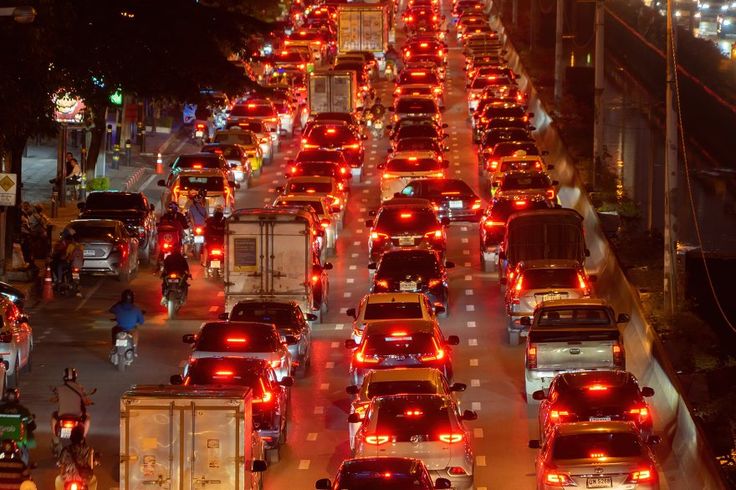Six hours to cover just 12 kilometres — that was the painful reality in Gurugram as heavy rain left roads submerged, traffic paralysed, and commuters stranded. From waterlogged highways to broken streets, the city turned into a nightmare, exposing once again its fragile infrastructure.
A 12-kilometre journey taking six gruelling hours — this was the harsh reality for thousands of commuters in Gurugram on Monday after heavy rainfall paralysed the city’s traffic network. With roads submerged, waterlogged stretches, and broken infrastructure, India’s corporate hub once again faced questions over its preparedness to handle the monsoon.
Gurugram Waterlogged, Roads Submerged, Traffic Disrupted
What began as a brief afternoon downpour soon turned into a civic disaster. Within an hour, traffic in Gurugram came to a complete stop as main roads became flooded. Stretches of NH-48, Sohna Road, and Golf Course Road were submerged, forcing vehicles to crawl through knee-deep water.
Traffic police confirmed that heavy rain severely disrupted traffic flow across the city, with commuters reporting six-hour-long delays for distances as short as 12 km. Even elevated roads and flyovers failed to provide relief, as approach roads leading to them were flooded.
The Day Chaos Took Over Gurugram
From Cyber City to Hero Honda Chowk, commuters were left stranded for hours. The streets of Gurugram became marshes due to potholes filled with filthy water, broken roads, and clogged drains. By late evening, the city resembled more of a water park than a financial hub.
For some, the rain turned a 25-minute journey into a half-day ordeal. Others simply gave up, abandoning their vehicles and walking home through waterlogged streets.
Commuters’ Anguish
The frustration was visible everywhere.
“I left Cyber Hub at 4 p.m. to reach my home in Sector 47. Normally it takes 25 minutes. Yesterday, it took me five-and-a-half hours. I reached home close to 10 p.m. after being stuck in knee-deep water. This city has no system,” said Rohit Malhotra, an IT professional.
School buses were stuck in areas that were underwater, and parents were concerned for their kids.
“My daughter’s school bus was stuck near Shankar Chowk for almost three hours. We were panicking because her phone battery had died. Finally, we had to pick her up ourselves. Ritika Gupta, a Sector 56 resident, stated that this is not the first time that rain has caused Gurugram to fall.
Worst-Affected Stretches
According to officials, the heaviest disruptions were seen at:
- NH-48 (IFFCO Chowk to Hero Honda Chowk) – Completely jammed, with vehicles barely moving.
- Sohna Road was submerged close to Badshahpur, resulting in kilometers of traffic jams.
- Golf Course Road & Extension – Choked due to waterlogging and ongoing construction.
- DLF Cyber City to Shankar Chowk – A notorious bottleneck, now worsened by flooding.
Internal lanes of residential colonies also turned into streams, offering no escape from the gridlock.
A City Crippled by Broken Infrastructure
Gurugram struggled on the fundamentals despite its tall glass skyscrapers and international offices. Waterlogging and submerged roads exposed the fragile drainage system, while potholes deepened the chaos.
Experts highlighted that the city’s infrastructure is no match for even moderate rainfall, as drains remain clogged and roads are frequently dug up without proper repairs.
Administration’s Response
The Gurugram Traffic Police issued advisories late into the night, urging commuters to avoid waterlogged stretches.
“Heavy rain led to severe waterlogging at multiple points, which in turn created unprecedented congestion. Our officers were on the ground trying to manage traffic manually. We urge people to stay indoors during periods of intense rain,” a spokeswoman added.
The Municipal Corporation of Gurugram (MCG) claimed ongoing repairs worsened the impact.
“Several stretches are under redevelopment. The rain coincided with peak hours, leading to gridlock. We are working on improving drainage capacity,” an official stated.
Social Media Uproar
Images of submerged cars and waterlogged underpasses flooded social media. As people made fun of Gurugram’s monsoon failures, the term “Gurujam” started to trend once more.
“Six hours for 12 km. Welcome to Gurujam 2025!” tweeted one user.
“Global MNC hub, local drainage flop,” read another viral post.
Economic Impact & Daily Wage Sufferings
Corporate offices were forced to let employees log off early or work from home. Food and e-commerce deliveries were delayed for hours, with many orders cancelled.
For daily wage workers and small businesses, the situation was devastating. Lost working hours meant lost income.
“I had three plumbing jobs lined up but couldn’t reach even one. The entire day’s earnings were gone,” said Arjun Kumar, a plumber.
Experts Weigh In
Urban planners called it a predictable disaster.
- Clogged drains cause instant waterlogging.
- Unscientific road construction leads to quick deterioration.
- Uncontrolled urban growth overwhelms civic systems.
- Poor coordination among agencies worsens crisis response.
“The problem isn’t the rain — it’s governance failure. Cities like Singapore face heavier rainfall but remain functional. Gurugram collapses because of poor planning,” said Prof. Meera Krishnan, urban expert.
Safety & Health Concerns
The chaos wasn’t just inconvenient — it was dangerous. Ambulances struggled to reach hospitals, and stagnant water raised fears of dengue and malaria outbreaks. Broken manholes in flooded areas posed additional risks for pedestrians.
Human Resilience Amid the Mess
Amid the waterlogged chaos, strangers helped strangers. Residents offered tea, snacks, and shelter to stranded commuters. In order to avoid accidents, volunteers directed traffic away from flooded potholes.
“The people didn’t fail us, even though the city did. “Humanity kept us going,” local resident Ananya Dutta said.
The Bigger Question
The episode is not new — every monsoon Gurugram becomes waterlogged and traffic-disrupted. Until drainage, road quality, and agency coordination are fixed, the so-called “millennium city” risks being remembered more for its jams than its skyscrapers.
Related News: Read More



